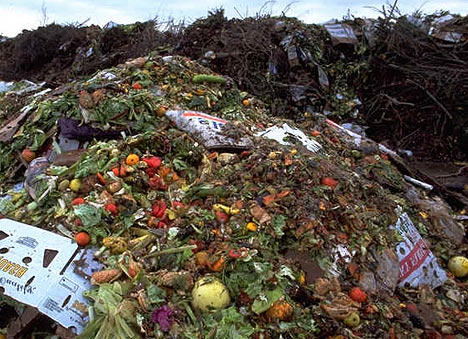
How many times have you put your nose to a gallon of milk to see if it smells sour one day after the expiration date? Have you ever picked up an apple at the grocery store and put it down because it had a tiny brown spot? Well, you are not alone. More than one-third of the food in the U.S. that is produced for consumption will not be eaten. To put it in perspective, if every American showed up to the Rose Bowl Stadium with a pound of food, not only will the stadium be filled to the top with wasted food, it will represent how much is actually wasted a day.
Now these are not just the table scraps that I am talking about here. Grocery stores throw away fruits and vegetables due to minor cosmetic blemishes, while leftover dinners get thrown out daily in our own kitchens. It is not about the 96.4 billion pounds of the 356 billion pounds of edible food that gets chucked in the trash, or the $150 billion a year spent on food that never reaches our mouths. It is about what our country is not doing to help prevent such incredible waste in such a crucial time.
The Nation’s Food Bank Network reported that donations of food are down 9 percent, while the number of people showing up for food has increased by 20 percent. Due to the economic crisis, money is tight for advertising, and publicizing the need for donations has been increasingly difficult. The media occasionally reports on hunger struggles around the U.S., however, not much is exposed on how much food gets wasted. In order to help eliminate wasted food, small steps are being taken by major influences including:
- College campuses eliminating trays
- How does this help? Students now have to carry individual plates instead of filling up a tray with food they might not eat.
- Restaurants are offering smaller portions.
- How does this help? Restaurants like T.G.I. Fridays are offering smaller portions for those who know they will not be able to eat as much to limit the amount of food that goes into the trash.
- Restaurants are donating their leftovers.
- How does this help? From lasagna to apple pie, whatever was not served but is still good can be donated to a food bank, the donation is tax deductible, and less goes in the trash, which means the cost for taking out the trash is less.
So how can we, as individuals, help prevent the obscene amount of wasted food? Here are a few steps to follow:
- Plan your meals before you grocery shop
- Make a detailed shopping list and stick to it
- Serve reasonable size portions
- Save leftovers
- Eat leftovers